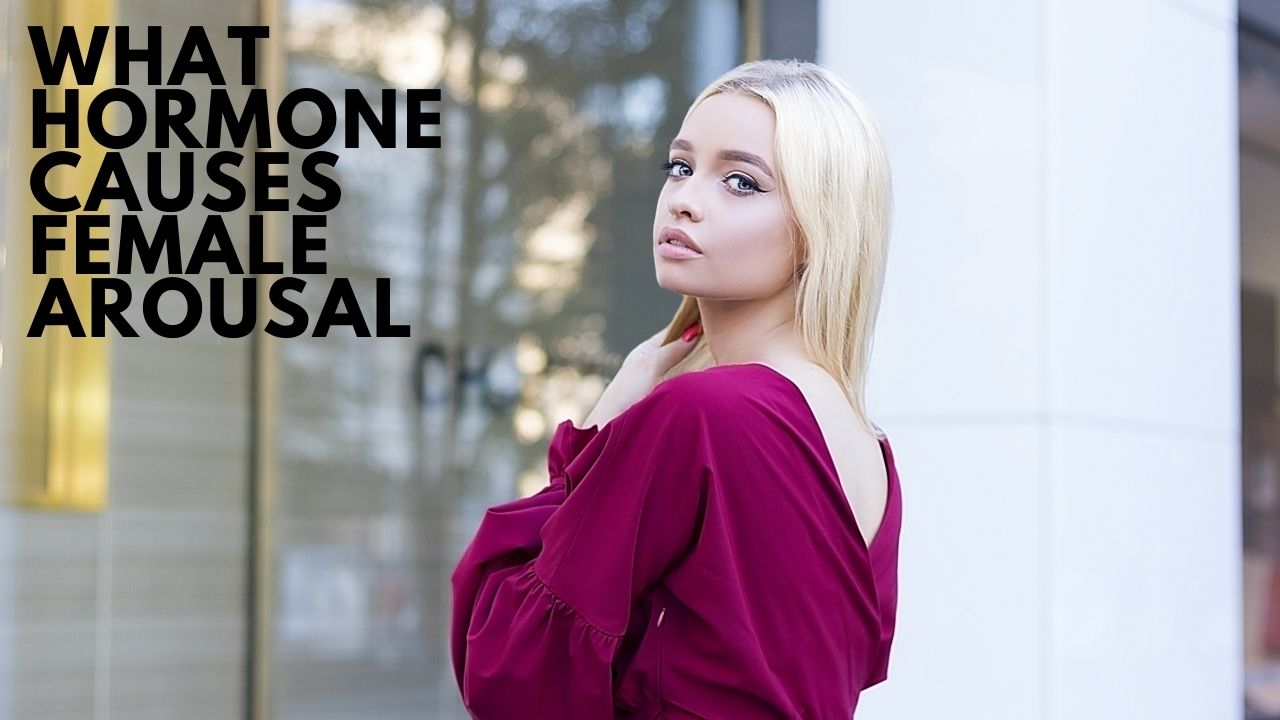Table of Contents
What to think about female sex chemicals
What Hormone Causes Female Arousal. Female sex chemicals, or sex steroids, assume imperative parts in the sexual turn of events, proliferation, and general wellbeing. Sex chemical levels change over the long haul; however, the absolute most critical changes occur during pubescence, pregnancy, and menopause.
What are sex chemicals?

Chemicals are compound couriers that the endocrine organs produce and deliver into the circulation system. Chemicals assist with directing many natural cycles, like craving, rest, and development.
Sex chemicals are those that assume a fundamental part in the sexual turn of events and generation. The real organs that produce sex chemicals are the adrenal organs and the balls, which remember the ovaries for females and testicles in guys.
Sex chemicals are likewise significant for a scope of actual capacities and an individual’s overall wellbeing. In the two guys and females, sex chemicals are associated with:
adolescence and sexual turn of events
propagation
sexual longing
directing bone and muscle development
fiery reactions
directing cholesterol levels
advancing hair development
muscle to fat ratio appropriation
Sex chemical levels vacillate all through an individual’s life. Elements that can influence the degrees of female sex chemicals include:
age
feminine cycle
pregnancy
menopause
stress
drugs
climate
Sex chemical uneven characters can prompt changes in sexual craving and medical issues like going bald, bone misfortune, and barrenness (What hormone causes female arousal)
Kinds of female sex chemical

In females, the ovaries and adrenal organs are the fundamental makers of sex chemicals. Female sex chemicals incorporate estrogen, progesterone, and tiny amounts of testosterone.
We examine every one of these sex chemicals underneath:
Estrogen
Estrogen is presumably the most notable sex chemical.
Albeit most estrogen creation happens in the ovaries, the adrenal organs and fat cells produce limited quantities of estrogen. Estrogen plays a vital part in the regenerative and sexual turn of events, starting when an individual arrives at adolescence.
Progesterone
The ovaries, adrenal organs, and placenta produce the chemical progesterone. Progesterone levels increment during ovulation and spike during pregnancy.
Progesterone balances out feminine cycles and readies the body for pregnancy. A low degree of progesterone can prompt sporadic periods, trouble considering, and a greater danger of complexities during pregnancy.
Testosterone
Even though testosterone is the primary sex chemical in guys, it is likewise present in lower sums in females.
In females, testosterone influences:
richness
sexual craving
period
tissue and bone mass
red platelet creation
Job in pubescence
Females ordinarily enter adolescence between the ages of 8 and 13 years, and pubescence generally closes around 14.
During pubescence, the pituitary organ begins delivering more considerable amounts of luteinizing chemical (LH) and follicle-invigorating chemical (FSH), which animates the creation of estrogen and progesterone.
Expanded degrees of estrogen and progesterone start the advancement of additional sexual attributes, which include:
bosom advancement
hair development on the underarms, legs, and pubic locale
expanded stature
expanded fat stockpiling on the hips, rear end, and thighs
augmenting of the pelvis and hips
expanded oil creation in the skin
Job in a monthly cycle
Menarche is whenever an individual initially get their feminine period, and it regularly happens between the ages of 12 and 13 years. Nonetheless, menarche can occur whenever somewhere in the range of 8 and 15 years old.
After menarche, many individuals have regular periods until they arrive at menopause. Monthly cycles are ordinarily around 28 days in length; however, they can fluctuate somewhere in the range of 24 and 38 days.
The monthly cycle happens in three stages that correspond with hormonal changes:
Follicular stage
The primary day of a period denotes the start of another feminine cycle. During a period, blood and tissue from the uterus leave the body through the vagina. Estrogen and progesterone levels are deficient now, and this can cause touchiness and state of mind changes.
The pituitary organ likewise delivers FSH and LH, incrementing estrogen levels and signing follicle development in the ovaries. Every follicle contains one egg. Following a couple of days, one predominant hair will arise in every ovary. The ovaries will retain the excess strands.
As the predominant follicle keeps developing, it will deliver more estrogen. This increment in estrogen animates the arrival of endorphins that raise energy levels and further develop the mindset.
Estrogen likewise enhances the endometrium, which is the uterus covering, in anticipation of a possible pregnancy.
Ovulatory stage
During the ovulatory stage, estrogen and LH levels in the body top make a follicle burst and deliver its egg from the ovary.
An egg can make due for around 12–24 hours in the wake of leaving the ovary. Preparation of the egg can just happen during this period.
Luteal stage
During the luteal stage, the egg trip from the ovary to the uterus through the fallopian tube. The burst follicle discharges progesterone, thickening the uterine covering, setting it up to get a prepared egg. When the egg arrives at the finish of the fallopian tube, it connects to the uterine divider.
An unfertilized egg will cause estrogen and progesterone levels to decrease. This denotes the start of the premenstrual week.
At long last, the unfertilized egg and the uterine coating will leave the body, denoting the current feminine cycle’s finish and the following.
Job in pregnancy
Pregnancy begins with the second prepared egg inserts in the mass of an individual’s uterus. Following implantation, the placenta creates and begins delivering various chemicals, including progesterone, relaxin, and human chorionic gonadotropin (hCG).
Progesterone levels consistently ascend during the initial not many long stretches of pregnancy, making the cervix thicken and structure the bodily fluid fitting.
The creation of relaxin forestalls withdrawals in the uterus until the finish of pregnancy, so, all things considered, it then, at that point, loosens up the tendons and ligaments in the pelvis.
Rising hCG levels in the body then, at that point, invigorate further creation of estrogen and progesterone. This quick expansion in chemicals prompts early pregnancy indications, like sickness, retching, and the need to pee more frequently.
Estrogen and progesterone levels keep on ascending during the second trimester of pregnancy. Right now, cells in the placenta will begin creating a chemical called human placental lactogen (HPL). HPL directs ladies’ digestion and supports the developing baby.
Chemical levels decrease when a pregnancy closes and, step by step, return to prepregnancy levels. When an individual breastfeeds, it can bring down estrogen levels in the body, which might forestall ovulation happening.
Job in menopause
Menopause happens when an individual quits having feminine periods and is presently not ready to become pregnant. In the United States, the average age at which a lady encounters menopause is 52 years.
Perimenopause alludes to the temporary time frame driving up an individual’s last period. During this change, enormous variances in chemical levels can make an individual encounter a scope of manifestations.
Manifestations of perimenopause can include:
sporadic periods
hot glimmers
dozing troubles
state of mind changes
vaginal dryness
As per the Office on Women’s Health, perimenopause, as a rule, goes on for around four years however can endure anyplace somewhere in the range of 2 and 8 years.
An individual arrives at menopause when they have gone an entire year without having a period. After menopause, the ovaries will just create tiny, however steady, measures of estrogen and progesterone.
Lower estrogen levels might lessen an individual’s sex drive and cause bone thickness misfortune, prompting osteoporosis. These hormonal changes may likewise expand the danger of coronary illness and stroke.
Job in sexual craving and excitement
Sexual craving and excitement are influenced by estrogen, progesterone, and testosterone. Increased estrogen levels in the body promote vaginal oil production and increase sexual desire. High progesterone levels can reduce sexual desire.
There is some discussion around what testosterone levels mean for a female sex drive.
Low degrees of testosterone might prompt diminished sexual craving in certain ladies. In any case, testosterone treatment seems inadequate at treating low sex drive in females.
As per an efficient audit from 2016Trusted Source, testosterone treatment can improve the impacts of estrogen, however, provided that a specialist regulates the testosterone at higher-than-ordinary levels. This can prompt undesirable incidental effects.
These incidental effects can include:
weight acquire
crabbiness
going bald
abundance beard growth
clitoral development
Hormonal irregularity
Hormonal equilibrium is significant for general wellbeing. Albeit hormonal levels vacillate routinely, awkward long-haul nature can prompt several manifestations and conditions.
Signs and side effects of awkward chemical nature can include:
unpredictable periods
abundance body and beard growth
skin break out
vaginal dryness
low sex drive
bosom delicacy
gastrointestinal issues
hot blazes
night sweats
weight acquire
exhaustion
touchiness and sporadic disposition changes
tension
gloom
trouble resting
Hormonal lopsided characteristics can be an indication of a hidden medical issue. They can likewise be a symptom of specific meds. Hence, individuals who experience extreme or repeating side effects of uneven hormonal characters should address a specialist.
In females, possible reasons for uneven hormonal characters include:
polycystic ovary condition
essential ovarian inadequacy
hormonal anti-conception medication
chemical substitution treatment
overabundance body weight
ovarian malignancy
stress
Synopsis

Chemicals are synthetic couriers that assist with directing substantial works and keep up with general wellbeing. Sex chemicals assume an urgent part in the sexual turn of events and propagation.
In females, the principal sex chemicals are estrogen and progesterone. The creation of these chemicals happens in the ovaries, adrenal organs, and, during pregnancy, the placenta.
Female sex chemicals likewise impact body weight, hair development, and bone and muscle development. Although these chemicals usually vary throughout an individual’s lifetime, distinctive long-haul characteristics can cause a scope of manifestations and wellbeing impacts.
What are the monthly cycle, periods, and PMS?
A period, or monthly cycle, is the shedding of the covering of the belly. The monthly cycle is otherwise called menses. Menses are essential for ordinary sexual wellbeing for ladies during their regenerative years.
The period that incorporates draining from the vagina is found essentially among people and comparative creatures, like primates.
The endometrial tissue is shed from the belly and is delivered through the vagina.
Generally, women have their periods roughly like clockwork; however, this cycle varies from a 24-day cycle to a 35-day cycle. A period is vital for the lady’s feminine process. It is an indication that the body is regularly working.
What is a period?
Period denotes the start of a lady’s regenerative years. From when she has her first period or a couple of days prior, she can become pregnant. The period will end with menopause, typically between the ages of 45 and 55 years.
A young lady will see her first period since blood will come from her vagina.
A lady has two ovaries, every one of which contains various eggs. Consistently during the regenerative years, an egg will be delivered. Additionally, invariably, the belly readies a coating if the egg ought to become treated. On the off chance that the egg doesn’t become treated, the covering isn’t required, and, along with the egg, it will be shed. We consider this to be as blood. This is the thing that we call a period.
If the egg is treated, the belly will require the covering, and it won’t be shed. This is the reason time frames stop when pregnancy starts.
When do periods begin?

Menarche is the beginning of periods. It will happen when every one of the parts that make up a young lady’s regenerative framework is experienced and cooperating.
A young lady’s periods, for the most part, start between the ages of 12 and 14 years; however, this can shift from 8 to 16 years. The period is a significant stage in a young lady’s pubescence. It is one of a few actual signs that a young lady is turning into a lady.
Around a half year before getting her first period, a young lady might recognize all the more clear vaginal release. If the discharge has a solid scent or causes irritation, this is typical and nothing to stress over. The time frames will happen routinely until the lady contacts her menopause.
The feminine cycle
The pituitary organ delivers chemicals in the cerebrum to invigorate the ovaries during the conceptive cycle. These chemicals cause a portion of the lady’s eggs, which are put away in the follicles of her ovaries, to begin to develop and develop.
The follicles begin delivering a chemical called estrogen. The expanded estrogen causes the belly covering to become thicker in anticipation of getting a prepared egg.
If a lady has engaged in sexual relations within a few days of the egg being delivered and sperm is available in her fallopian tube, the egg might become treated, and she will become pregnant.
Nonetheless, note that pregnancy is conceivable with unprotected sex whenever during the period.
If the egg isn’t prepared, estrogen and progesterone levels will drop, and the covering of the uterus (endometrium) will begin separating. This denotes the beginning of the period.
The time frame comprises a limited quantity of blood and the endometrium. The draining is brought about by breaking delicate veins inside the belly as the coating confines itself.
A period, for the most part, goes on around five days. Draining will, in general, be heavier during the initial two days. In any event, when the bloodstream appears to be weighty, the measure of blood lost is, as a rule, around 5 to 12 teaspoons.
A few ladies experience heavier than typical periods, known as menorrhagia. A specialist should assess menorrhagia, which can prompt issues like an iron deficiency because of a low blood count.
Premenstrual condition (PMS)
Premenstrual condition (PMS) or premenstrual pressure (PMT) is an assortment of passionate, mental, and actual side effects connected to a lady’s period.
Indications that might be felt by certain ladies in the days paving the way to her period include:
stomach bulging
skin break out
cerebral pain, including headache
crabbiness
torments, particularly spinal pain
low mindset
feeling commonly enthusiastic or pained
sleep deprivation
absence of fixation
bosom delicacy or enlarging
slight weight acquire
overeating
When the period starts and the lady begins shedding blood, the manifestations, for the most part, improve. Much of the time, side effects will be passed when the period has finished.
The accompanying variables might expand the odds of PMS:
high caffeine utilization
stress
a background marked by discouragement or other psychological instability
smoking and liquor utilization
family background of PMS
low levels of certain nutrients and minerals, calcium, and B nutrients
Sporadic periods
The typical cycle length is 28 days, yet it can differ from 21 to 40 days.
For some ladies, the length of the cycle and the measure of carnage is similar each cycle. Notwithstanding, a few ladies have sporadic periods.
There might be varieties in:
the stretch length between periods
the measure of blood lost
the length of dying
Unpredictable periods can have various causes, and treatment will rely upon the reason.
It isn’t uncommon to have sporadic periods for six years after the beginning of the monthly cycle or during perimenopause when the lady’s body plans for menopause.
Numerous ladies have missed a period eventually. This could be for reasons unknown, fully expecting a pregnancy, or maybe in light of uneasiness or strain.
Unpredictable periods might be brought about by a broad scope of elements, including the accompanying:
harmless injuries like uterine fibroids, endometrial polyps, and scarring
chemical lopsidedness
draining problems
prescriptions
changes in anti-conception medication strategies
contamination in the uterus
the disease of the uterine covering or cervical malignant growth
Any individual who is worried about sporadic periods should see a specialist.
What is amenorrhea (missing periods)?

Amenorrhea is the point at which a lady quits having periods inside and out, ordinarily having missed three periods in succession. It is likewise utilized if a young lady has not started the feminine cycle by 15 years.
Explanations behind this include:
extreme exercise or weight reduction
stress
a few meds, including anti-conception medication
hormonal issues
pregnancy
Torment
This is an ailment that incorporates severe uterine torment during the period.
Most ladies experience minor torment during the feminine cycle. However, if the aggravation is severe, it meddles with ordinary activities; it is called dysmenorrhea. It might require medicine.
A few ladies experience torment during the days before, while others have dysmenorrhea during the period. As the monthly cycle eases off, the agony, for the most part, does, as well.
A few ladies experience both dysmenorrhea and menorrhagia or extreme blood misfortune.
The accompanying manifestations might be available:
squeezing and torment in the lower midsection
looseness of the bowels
migraines
low back torment
sickness
the torment that transmits down the legs
sluggishness and exhaustion
shortcoming
retching
Dysmenorrhea is almost unavoidable in the accompanying gatherings:
ladies more than 30 years of age’s
smokers
being underweight or overweightTrusted Source
those whose periods began before they were 12 years of age
Endometriosis, fibroids, and secondary dysmenorrhea are all caused by the regenerative framework.
Pregnancy
Here are a few realities about period and pregnancy:
It is far-fetched yet conceivable to become pregnant if you engage in sexual relations during your period, contingent upon the length of your month-to-month cycle since sperm can remain alive for as long as five days.
The motivation behind periods is to set up the belly for origination. On the off chance that origination doesn’t happen, the unused egg and coating are shed, and the uterus prepares to have another attempt. Periods don’t keep during pregnancy since origination has occurred.
You are probably not going to have a period during pregnancy. However, light spotting or draining may occur during pregnancy at the time you would ordinarily have had a period.
Draining may happen around week 6, at the time the placenta takes over supporting the embryo.
Draining can be an indication of an ectopic pregnancy or pregnancy misfortune. Any draining ought to be accounted for by a specialist.
Treatment
Ladies who experience awkward indications identified with the monthly cycle might find that treatment offers some help.
Painkillers: For period torments and uneasiness, painkillers can be viable. These could incorporate acetaminophen (Tylenol), ibuprofen, and anti-inflammatory medicine.
Contraception: The prophylactic pill regularly facilitates period torments. The covering of the uterus will be more slender, bringing about less withdrawal during the feminine cycle.
Exercise: Exercise has been found to assist with diminishing the degree of distress and torment experienced by ladies with period issues.
Unwinding strategies: These can incorporate breathing activities, back rub, and prescription. A few ladies practice yoga to facilitate agony and stress.
Warmth treatment: Holding a heated water bottle against the mid-region might help in decreasing distress.
Steaming shower: Apart from assisting with unwinding, a steaming shower may likewise give some help from agony or uneasiness.
Items
Feminine items are used to retain or get the menses to come in one or the other expendable or reusable structures.
Dispensable feminine items
Clean cushions or napkins: Towels, cushions, or napkins are set in the clothing and assimilate the feminine stream.
Tampons: These are chambers that are embedded into the vagina, where they assimilate the feminine stream. They are produced using treated rayon or cotton mixes or 100% cotton downy.
Reusable feminine items
Material cushions: These are by and large made of cotton, terrycloth, or wool. They are put remotely. They are launderable.
Feminine cups: These are embedded straightforwardly into the vagina to get the feminine stream. They are reusable. There are additionally dispensable renditions.
Reusable clothing: Often called “cushioned undies,” generally made of cotton with retentive layers sewn on. They can be washed and reused.
Cover: Also known as a towel or draw sheet. These are vast bits of fabric that are set between the legs utilized during rest. They can be washed and used once more.
What Hormone Causes Female Arousal

